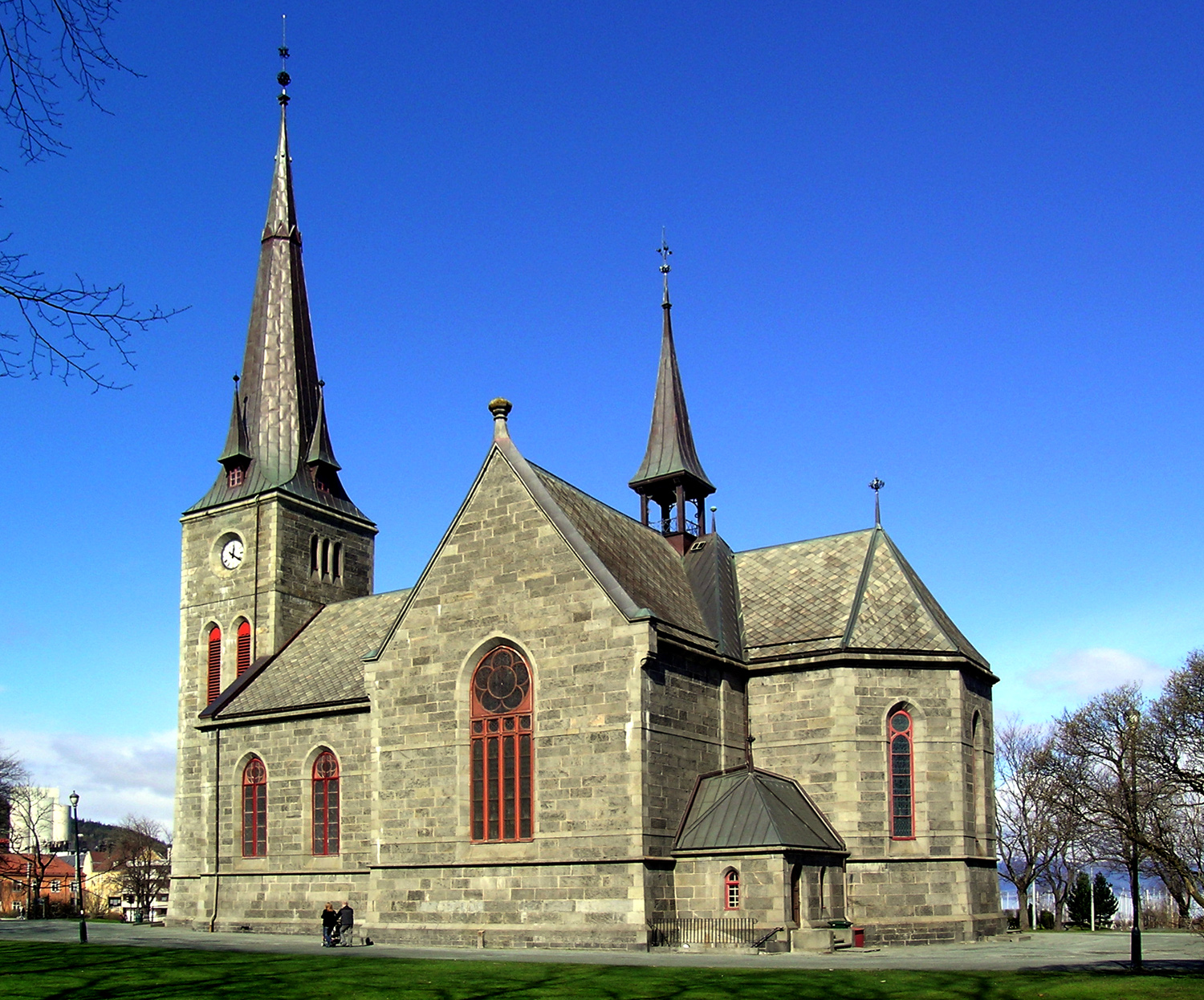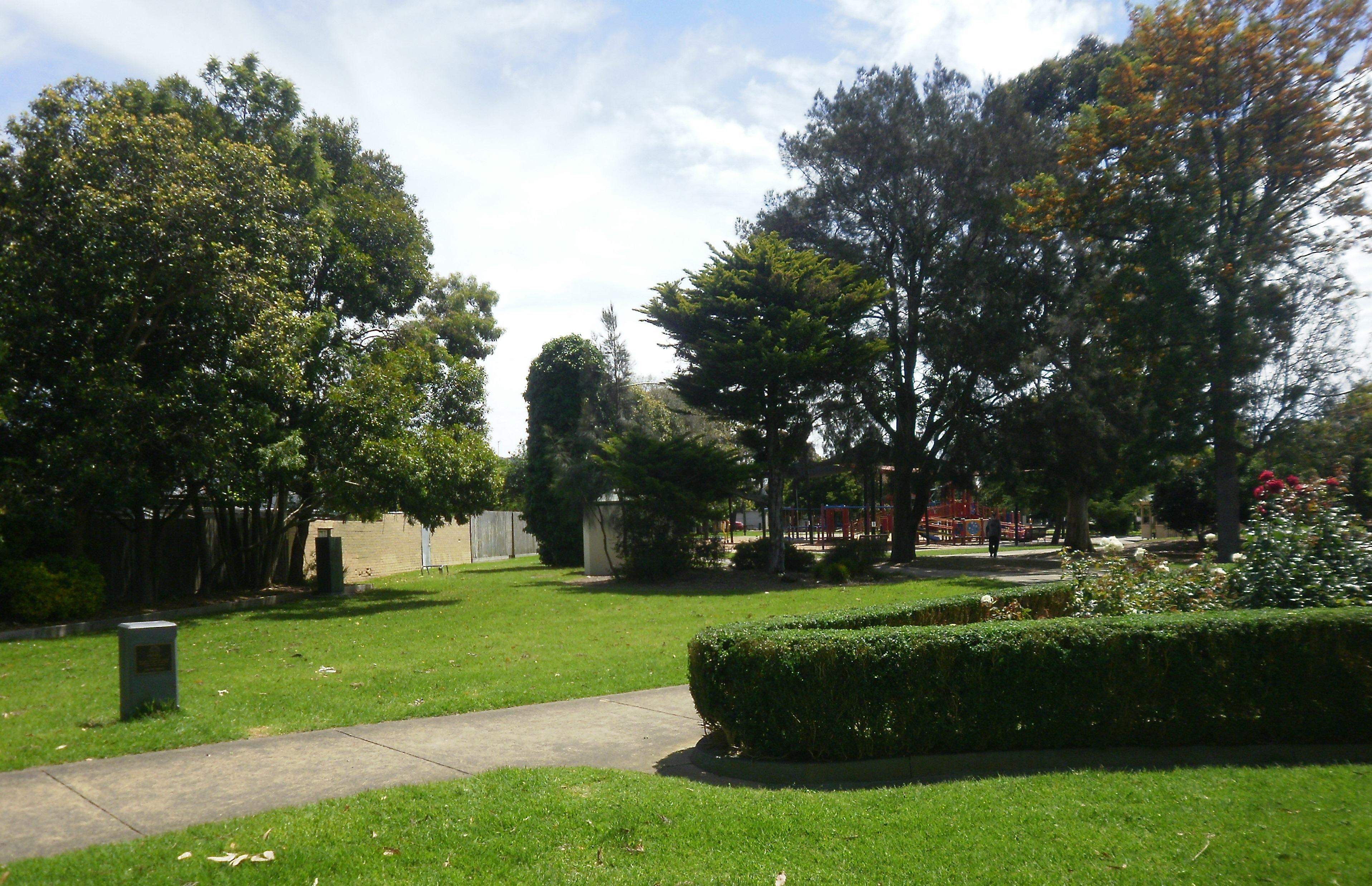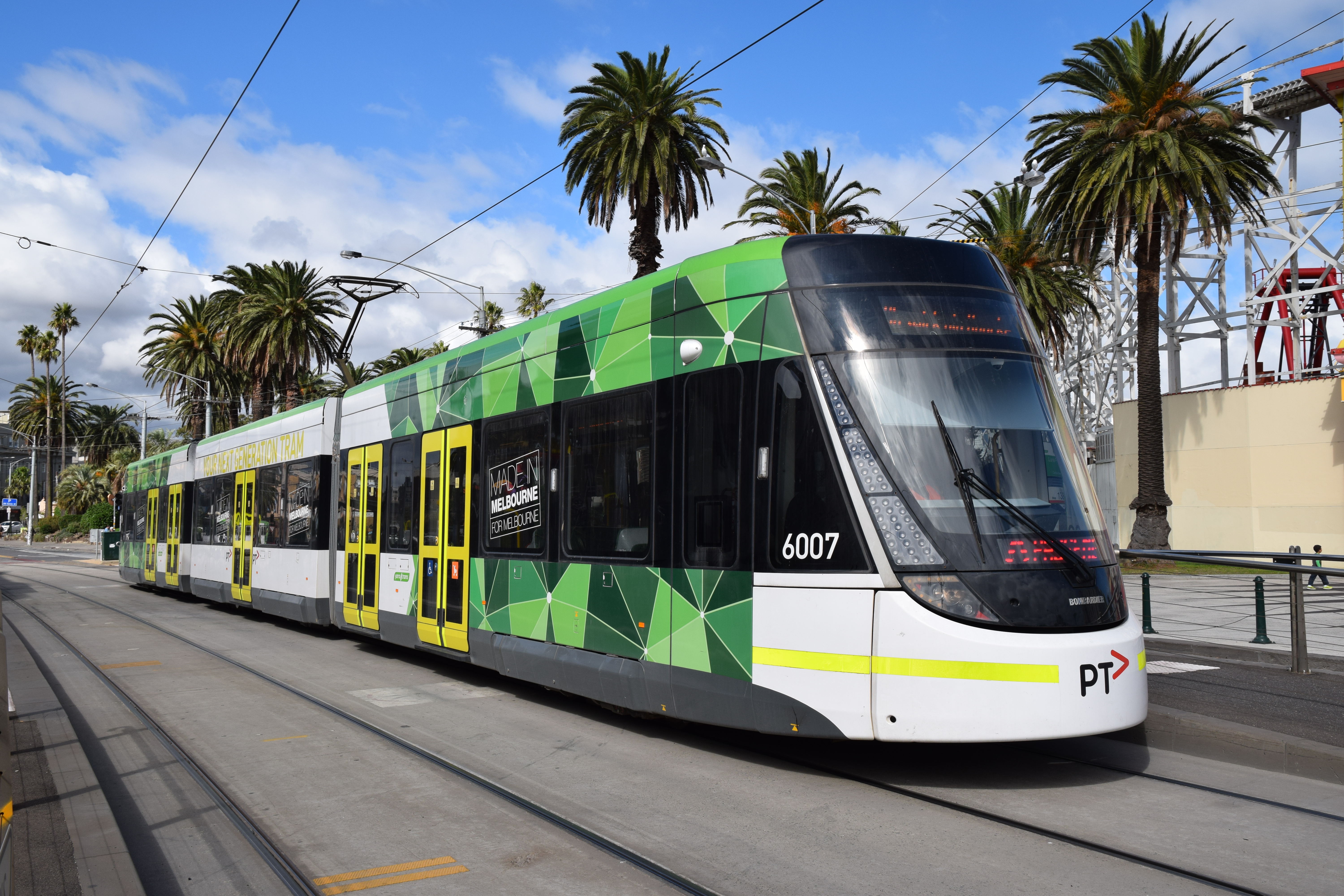|
Ila (station)
Ila, formerly Ilevolden, is a tram stop on the Trondheim Tramway, located at Ila, Trondheim in Trondheim, Norway. It was the original terminus of Ilalinjen, the first tramway and opened in 1901. In 1924 it also became a stop for the private Gråkallbanen that ran to Lian. The station featured at first a loop around the park it served, but it was later changed to a turning triangle. The station was the terminus for Line 1 of Trondheim Sporvei until 1971 when it was merged with A/S Graakalbanen and Line 1 was extended to Lian. The stop is also a stop for bus lines 5 and 8, as well as for buses heading to Trolla and Fosen Fosen is a traditional district in Trøndelag, consisting of the municipalities Osen, Roan Åfjord, Ørland, Indre Fosen, Orkland, Heim, Hitra and Frøya. The district is dominated by forested valleys, lakes, coastal cliffs but also shallow .... The stop primarily serves the residential areas at Ila. References Trondheim Tramway stations Rail ... [...More Info...] [...Related Items...] OR: [Wikipedia] [Google] [Baidu] |
Ila, Trondheim
Ila is a neighborhood in the city of Trondheim in Trøndelag county, Norway. It is located in the borough of Midtbyen, just west the central downtown area of Trondheim. Ila is bordered by the river Nidelva in the south, Skansen in the north, and Steinberget, Bymarka, and Ilsvikøra in the west. The area is mostly residential, with some industry and commerce. The Gråkallbanen tram line runs through Ila and the area is served by the Skansen Train Station on the Trønderbanen commuter train line. Nordre Avlastningsvei, which was completed during 2010, connects Ila via Brattøra to Lademoen. History The first settlement at Ila was in the second half of the 18th century. During the 19th century, the area developed as the entertainment centre of Trondheim, with dance saloons, pubs, and liquor stores. In 1826, it was the site for the first Norwegian Constitution Day parade. During the late 19th century the area started being redeveloped into dense labour-class housing, ... [...More Info...] [...Related Items...] OR: [Wikipedia] [Google] [Baidu] |
Park
A park is an area of natural, semi-natural or planted space set aside for human enjoyment and recreation or for the protection of wildlife or natural habitats. Urban parks are green spaces set aside for recreation inside towns and cities. National parks and country parks are green spaces used for recreation in the countryside. State parks and provincial parks are administered by sub-national government states and agencies. Parks may consist of grassy areas, rocks, soil and trees, but may also contain buildings and other artifacts such as monuments, fountains or playground structures. Many parks have fields for playing sports such as baseball and football, and paved areas for games such as basketball. Many parks have trails for walking, biking and other activities. Some parks are built adjacent to bodies of water or watercourses and may comprise a beach or boat dock area. Urban parks often have benches for sitting and may contain picnic tables and barbecue grills. The la ... [...More Info...] [...Related Items...] OR: [Wikipedia] [Google] [Baidu] |
Skansen Station
Skansen (''Skansen stasjon'') is a railway station located at Ila in Trondheim, Norway. It is on the Dovre Line (''Dovrebanen''), 1.20 kilometers from Trondheim Central Station. Service to the station is provided though the Trøndelag Commuter Rail operated by SJ Norge and regional trains to Røros Station. It was opened in 1893. The station is located in a residential area. It is the only railway station in Trondheim to have connections with the Trondheim Tramway. It is also served by city buses. Tram stop The Trondheim Tramway's Gråkallen Line stops at a tram stop about 50 meters from the railway station. The tram stop dates back to the original construction of the first tram line in Trondheim, the Ila Line, in 1893. See also *Skansen Bridge The Skansen Bridge ( no, Skansen jernbanebro) is a 52-meter span bascule railway bridge located at Skansen in Trondheim, Norway. History The bridge was opened on March 22, 1918, allowing trains on the Dovre Line access to Trondheim ... [...More Info...] [...Related Items...] OR: [Wikipedia] [Google] [Baidu] |
Fosen
Fosen is a traditional district in Trøndelag, consisting of the municipalities Osen, Roan Åfjord, Ørland, Indre Fosen, Orkland, Heim, Hitra and Frøya. The district is dominated by forested valleys, lakes, coastal cliffs but also shallow areas, and in the interior mountains reaching up to 675 m elevation. The western coast has many skerries and some islands, such as Stokkøya in Åfjord. There are some good salmon rivers, and sea eagles and other sea birds are very common along the coast, notably on the shallow area near Ørland (''Grandefjæra''). The west coast has mild winters, and some locations (just west of the mountains) receive on average more than 2,000 mm of precipitation per year. Part of the Scandinavian coastal conifer forests (''No: Kystgranskog'') are located in the valleys of the peninsula, and smaller areas are classified as temperate rainforest with 67 nature reserves. The largest nature reserve is Øyenskavelen (5,316 hectare), with many nature t ... [...More Info...] [...Related Items...] OR: [Wikipedia] [Google] [Baidu] |
Trolla
Trolla is a village in the municipality of Trondheim in Trøndelag county, Norway. It is located in the Midtbyen borough, along the Trondheimsfjord on the north coast of the Bymarka area. It is about northeast of the village of Langørjan Langørjan or Rye is a village in the municipality of Trondheim in Trøndelag county, Norway. The village is located in the borough of Heimdal in the Byneset district about west of the city of Trondheim and about north of the village of Spongda ... and about northwest of the Ila neighborhood in the city of Trondheim. The village has a population (2018) of 549 and a population density of . References Geography of Trondheim Villages in Trøndelag {{Trøndelag-geo-stub ... [...More Info...] [...Related Items...] OR: [Wikipedia] [Google] [Baidu] |
A/S Graakalbanen
A/S Graakalbanen was a private company that built and operated the Gråkallen Line of the Trondheim Tramway between 1924 and 1972. Established in 1916, it bought large land areas in Byåsen, and built a tramway through these to reach the recreational areas in Bymarka. The line first reached Munkvoll in 1924, Ugla in 1925, and finally Lian in 1933. The company owned through its history seven trams and five trailers, and only in the last few years did it operate six borrowed TS Class 7 trams. The company had financial difficulties throughout its life. Only in the 1940s and 50s was traffic sufficient to create a profit. To supplement, the company was a large land owner, and sold housing lots along the line to increase ridership and generate income. It also operated sales of ice, and the recreational area at Lian. The company was bought by the city in 1966, and merged with Trondheim Sporvei and Bynesruten in 1972 to form Trondheim Trafikkselskap. History Establishment During the ... [...More Info...] [...Related Items...] OR: [Wikipedia] [Google] [Baidu] |
Trondheim Sporvei
Trondheim Sporvei was a municipally owned tram operator in Trondheim, Norway that existed between 1936 and 1974. The company operated the municipal parts of the Trondheim Tramway until it was merged with A/S Graakalbanen and Trondheim Bilruter to create Trondheim Trafikkselskap. That company has become part of Nettbuss, the largest Norwegian bus company in Norway which is owned by Norwegian State Railways (''Norges Statsbaner AS''). History The tramway in Trondheim was started in 1901 and replaced a horse omnibus service from 1893. The city council established Trondhjems Elektricitetsværk og Sporvei to build and operate the tramway. In 1936 the two companies were split, with Trondheim Energiverk, the other half of the company specialising as a power company. Trondheim Sporvei operated three lines, including the original Ilalinjen and also built Elgeseterlinjen (1913), Ladelinjen The Lade Line ( no, Ladelinjen) was a tramway between Munkegata and Lade in Trondhe ... [...More Info...] [...Related Items...] OR: [Wikipedia] [Google] [Baidu] |
Wye (railroad)
In railroad structures, and rail terminology, a wye (like the'' 'Y' ''glyph) or triangular junction (often shortened to just "triangle") is a triangular joining arrangement of three rail lines with a railroad switch (set of points) at each corner connecting to each incoming line. A turning wye is a specific case. Where two rail lines join, or in a joint between a railroad's mainline and a spur, wyes can be used at a mainline rail junction to allow incoming trains the ability to travel in either direction, or in order to allow trains to pass from one line to the other line. Wyes can also be used for turning railway equipment, and generally cover less area than a balloon loop doing the same job, but at the cost of two additional sets of points to construct, then maintain. These turnings are accomplished by performing the railway equivalent of a three-point turn through successive junctions of the wye, the direction of travel and the relative orientation of a locomotive or rai ... [...More Info...] [...Related Items...] OR: [Wikipedia] [Google] [Baidu] |
Lian Station
Lian Station is the terminus of Gråkallbanen, the remaining part of the Trondheim Tramway in Trondheim, Norway. The Lian terminus serves as the main access point to the city's largest recreational area, Bymarka, which is west of Byåsen Byåsen is a large neighborhood area in the city of Trondheim in Trøndelag county, Norway. It constitutes a large part of the city in the borough of Midtbyen. It encompasses a number of areas southwest of the main city centre. This includes al .... The station was built for the third expansion of line and opened in 1933. Until 1947, the trams had to change direction at the station, but in that year a loop was built allowing the trams to continue back along the loop. Route References Trondheim Tramway stations {{Norway-tram-stub ... [...More Info...] [...Related Items...] OR: [Wikipedia] [Google] [Baidu] |
Private Ownership
Private property is a legal designation for the ownership of property by non-governmental legal entities. Private property is distinguishable from public property and personal property, which is owned by a state entity, and from collective or cooperative property, which is owned by a group of non-governmental entities. Private property is foundational to capitalism, an economic system based on the private ownership of the means of production and their operation for profit. The distinction between private and personal property varies depending on political philosophy, with socialist perspectives making a hard distinction between the two. As a legal concept, private property is defined and enforced by a country's political system. History Ideas about and discussion of private property date back to the Persian Empire, and emerge in the Western tradition at least as far back as Plato. Prior to the 18th century, English speakers generally used the word "property" in reference ... [...More Info...] [...Related Items...] OR: [Wikipedia] [Google] [Baidu] |
Tram
A tram (called a streetcar or trolley in North America) is a rail vehicle that travels on tramway tracks on public urban streets; some include segments on segregated right-of-way. The tramlines or networks operated as public transport are called tramways or simply trams/streetcars. Many recently built tramways use the contemporary term light rail. The vehicles are called streetcars or trolleys (not to be confused with trolleybus) in North America and trams or tramcars elsewhere. The first two terms are often used interchangeably in the United States, with ''trolley'' being the preferred term in the eastern US and ''streetcar'' in the western US. ''Streetcar'' or ''tramway'' are preferred in Canada. In parts of the United States, internally powered buses made to resemble a streetcar are often referred to as "trolleys". To avoid further confusion with trolley buses, the American Public Transportation Association (APTA) refers to them as " trolley-replica buses". In the ... [...More Info...] [...Related Items...] OR: [Wikipedia] [Google] [Baidu] |





